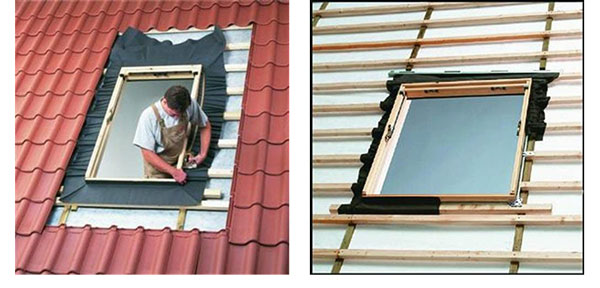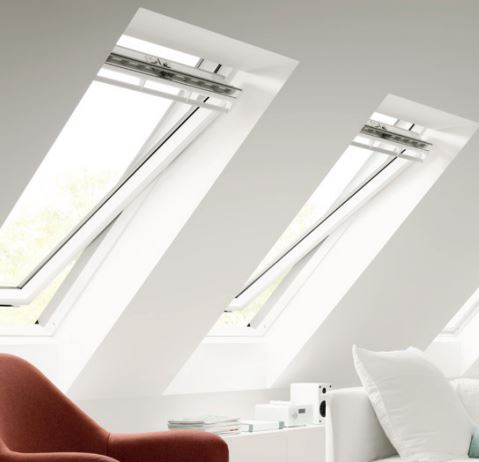 The VELUX flashing that you need depends on the material of the roof and the types of finishing touches you might want. For example, choosing the correct flashing for your roof material is essential but you can choose freely whether you’d like recessed or standard roof windows. Other options include adding additional energy efficiency and eliminating cold bridging. Below is a small list of things you need to know in order to choose the correct VELUX flashing kit. Click on the questions to find out which VELUX flashing you’ll need for any of the outcomes.
The VELUX flashing that you need depends on the material of the roof and the types of finishing touches you might want. For example, choosing the correct flashing for your roof material is essential but you can choose freely whether you’d like recessed or standard roof windows. Other options include adding additional energy efficiency and eliminating cold bridging. Below is a small list of things you need to know in order to choose the correct VELUX flashing kit. Click on the questions to find out which VELUX flashing you’ll need for any of the outcomes.
To choose the right VELUX flashing you need to know:
- What do the VELUX flashing codes mean?
- What type of tile is on your roof?
- Do you want standard or recessed installation?
What do the VELUX flashing codes mean?
You may have noticed that each VELUX flashing features a combination of three letters (EDJ, EDN, EKP and so on) followed by a four-digit number (1000, 2000 and so on). The number refers to the range, but what about the letters?
Let’s take a closer look:
First letter – refers to the type of product. When dealing with a flashing, this is always going to be an E.
Second letter – refers to the flashing style. The letter D stands for single flashing, B for twin, K for combi and F for sloping/vertical.
Third letter – refers to roofing material on the type of installation (more on that later). With a standard installation, the options are L for slate, W for tile and P for plain tile. With a recessed installation, you’ll see N for slate and J for tile.
So, the VELUX code EDW, for instance, denotes a single flashing fitted on a tile roof with standard installation.
What type of tile is on your roof?
Just like how a pitched roof window must be installed between a certain pitch, flashing kits are the same. The flashing kit must match the roof pitch and naturally, then it will match the roof window. It’s essential to choose the flashing kit that’s compatible with whatever material is on the roof. Different types of tiles and materials have different requirements. VELUX produce tile flashing, slate flashing, and plain tile flashing across their range of pitch roof windows.
For a 15-90° tile roof, choose the VELUX EDW flashing kit
This flashing kit is compatible with tile roofs with tiles up to 120mm in profile. The flexibility of the flashing means it’s compatible with many tile profiles, including profiles which feature many troughs and peaks. This particular flashing kit is suited to interlocking tiles, thatch tiles and profile sheet roofing too. Choose your size of VELUX EDW flashing kits.
For a 15-90° slate roof, choose the VELUX EDL flashing kit
This VELUX flashing kit, VELUX EDL, is suited to slate roofs with slate profiles of up to 8mm thick. Unfortunately, this kit isn’t compatible with interlocking slates, for this, you should use the EDW kit mentioned above. Choose your size of VELUX EDL flashing kits.
For a 25-90° plain tile roof, choose the VELUX EDP flashing kit
VELUX EDP flashing kit is compatible with any plain tile roof with a minimum pitch of 25 degrees. There is also a maximum length of plain tile this flashing is compatible with – 300mm. Plain tiles can’t be above 14mm for this flashing to be effective. Choose your size of VELUX EDP flashing kits.
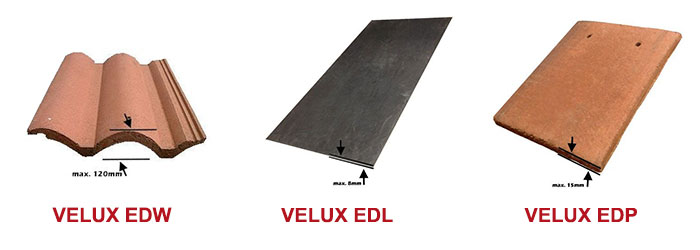
For a 10-75° tile roof, choose the VELUX EAW low pitch flashing kit
VELUX EAW low pitch flashing kits are for tiled roofs with a maximum profile of 120mm. Sometimes known as a VELUX mini dormer flashing kit, this particular flashing kit is designed for use with roof windows in a roof with a minimum pitch of 10 degrees. The usual minimum roof pitch for VELUX windows is 15 degrees so this flashing gives a lot of flexibility in design for low pitch roofs. Choose your size of VELUX EAW low pitch flashing kits.
For a 15-90° roof of any other substrate, including lead or standing seam sheeting, choose the VELUX ZWC special header flashing kit
VELUX does offer a flashing kit for non-traditional roof materials. If a roof isn’t slate or tiles it can still benefit from the looks and the light of a VELUX pitch roof window by utilising the ZWC flashing kit. This flashing kit is designed to overlap the roof material with a hood-like special head flashing. The installer then just needs to flash up to the window frame to ensure weather tightness. It’s not necessarily a flashing, it’s a covering to allow for flashing on a non-traditional roof. Choose your size of VELUX ZWC special header flashing kit.
Please note: ZWC flashing can also be used when installing a VELUX pitch roof window into a self-built timber kerb on a flat roof.
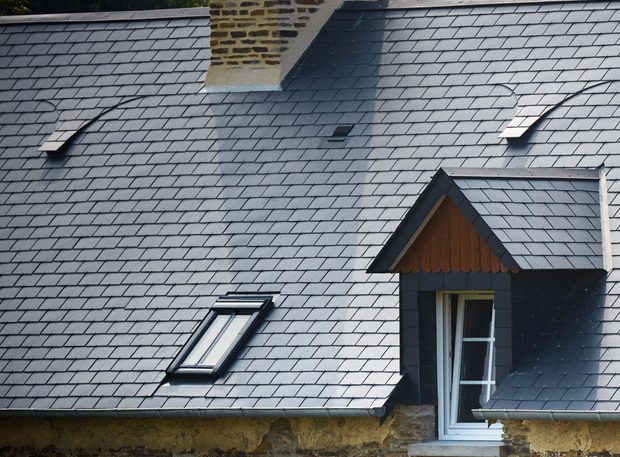
Do you want your VELUX window to be installed as standard or recessed?
VELUX pitch roof windows can be installed in one of two ways, and this totally depends on the final look a homeowner or builder is looking to go for. You can install VELUX windows as standard which means the window will protrude around 30mm from the roofline. When you install a recessed window, the window is installed 40mm deeper into the roof so the outside sits flush with the tiles. This gives a more streamlined and, in some opinions, better-looking finish. To achieve a recessed finish you need a different flashing kit.
For a 20-90° tile roof, choose VELUX EDJ recessed flashing kit
For tile roofs with tiles up to 90mm thick, opt for a VELUX EDJ recessed flashing kit for a flush-fit pitch roof window. This flashing must be installed on a roof with a minimum of 20 degrees so, unfortunately, roofs under 20 degrees aren’t compatible with installing recessed windows. Choose your size of VELUX EDJ recessed flashing kit.
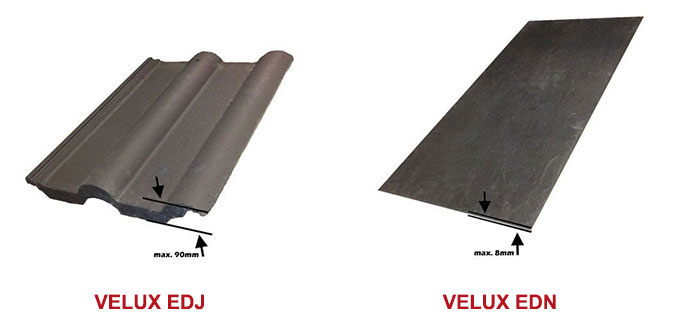
For a 20-90° slate roof, choose VELUX EDN recessed flashing kit
This VELUX EDN recessed flashing kit is suited for slate roofs with a maximum slate thickness of 8mm. This kit isn’t suited to interlocking slates so be wary of what type of slate you have before purchasing. Choose your size of VELUX EDN recessed flashing kit.
